User research is critical to creating meaningful, user-centered experiences, and helps design products and services that align with users’ needs and behaviors. As technology evolves, so do the methods and approaches used to conduct user research. In 2024, several key trends have been shaping how companies understand and engage with their audiences.
Remote Research Becomes the Norm
The shift toward remote user research, accelerated by the pandemic, has become a permanent fixture in the field. Remote research tools, such as unmoderated usability testing platforms, have made it easier to gather data from diverse, global audiences. Teams can conduct remote interviews, usability testing, and A/B testing without geographic constraints. This trend offers flexibility for both researchers and participants, expanding the potential for diverse user feedback.
Remote research also reduces costs and logistical challenges, enabling companies to iterate faster and access a wider range of users in different markets. However, it does come with challenges, such as maintaining participant engagement and ensuring a controlled testing environment, which companies are addressing with new tools and protocols.
The Rise of Hybrid Research Approaches
While remote research dominates, hybrid research is becoming a favored approach. Hybrid models combine in-person and remote research, allowing teams to tailor their methods based on the project’s needs. For example, in-person contextual inquiries can be supplemented by remote usability testing, ensuring a broader understanding of the user experience. Hybrid approaches provide a balance, retaining the advantages of face-to-face research while leveraging the convenience and scalability of remote testing.
This method also accommodates users who prefer in-person interaction and those who find remote participation more accessible. This adaptability helps research teams gather richer data and meet the expectations of a more diverse user base.
AI-Powered Research Tools
Artificial intelligence (AI) is transforming user research. AI tools now assist with data analysis, making it easier to process large sets of qualitative data and identify patterns. AI-powered tools analyze user feedback, session recordings, and survey responses, highlighting key insights that may otherwise take weeks to uncover manually.
AI is also enhancing real-time research, allowing chatbots and virtual assistants to conduct user interviews and gather insights in a conversational format. This technology streamlines the research process, reducing human bias and increasing the speed at which data is processed. Researchers need to ensure AI tools are used thoughtfully, keeping a balance between automation and human insight.
Focus on Inclusive and Accessible Research
As awareness around accessibility and inclusivity grows, user research is focusing more on ensuring products are designed for all users, regardless of ability or background. Accessibility testing has become a key part of the research process, ensuring that products meet the needs of users with disabilities. Additionally, more emphasis is placed on recruiting diverse participants for user studies to reflect the broad spectrum of users who engage with digital products.
Tools like Fable and Stark are enabling research teams to include people with disabilities early in the design process, rather than as an afterthought. The trend toward inclusive research ensures that products are not only compliant with accessibility standards but also genuinely usable and enjoyable for a wider audience.
Continuous User Research
Traditional user research often happens at the start of a project or in phases. Now, continuous research is becoming the norm. With digital products constantly evolving through regular updates and new features, research needs to be ongoing to stay in tune with users’ needs. Continuous research allows teams to maintain a feedback loop, consistently gathering insights to refine and optimize the user experience.
This is especially useful for product teams using Agile methodologies, as continuous research can integrate seamlessly into sprints, helping teams validate assumptions, identify pain points, and iterate on designs faster.
Data Privacy and Ethical Research
As privacy concerns grow, so does the emphasis on ethical user research. Companies are increasingly aware of the need to prioritize user consent and data privacy, particularly with regulations like GDPR and CCPA shaping how research can be conducted. Ethical research practices now involve transparency with users about how their data will be used, giving them more control over their participation and the information they share.
Ethical considerations also extend to making sure that research participants are compensated fairly, that their contributions are valued, and that research findings are not manipulated to fit predetermined outcomes.
